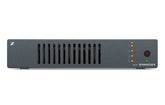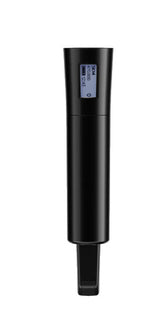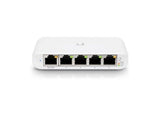Top 5 Surveillance Technology Trends for 2025
Introduction: Surveillance Tech Is Evolving Fast—Are You Ready?
By 2027, the global video surveillance market is projected to reach over $83 billion, driven by smarter analytics, cloud-native platforms, and AI-powered devices. As threats evolve and demand for smarter security grows, the surveillance industry is undergoing a massive transformation—one that businesses, integrators, and even homeowners can’t afford to ignore.
Whether you're overseeing large-scale commercial security or upgrading a residential system, staying on top of surveillance technology trends is critical. Modern systems are no longer just about recording video—they’re about real-time detection, intelligent analysis, and seamless integration across networks and devices.
In this post, we’ll explore the top 5 surveillance technology trends for 2025, the benefits they offer, the challenges that come with them, and how to start adopting them into your current security infrastructure.
What Are the Top Surveillance Technology Trends in 2025?
Surveillance technology in 2025 is no longer reactive—it's predictive, automated, and deeply integrated into the broader AV and networking ecosystem. These five trends are defining the future of security:
1. AI-Powered Video Analytics
Artificial Intelligence is no longer a luxury—it’s a necessity. AI in surveillance allows cameras to not just record footage, but interpret what they see in real time.
-
Use Cases: Object detection, facial recognition, license plate reading, behavior prediction.
-
Benefits: Reduces false positives, automates alerts, enables real-time decision-making.
Why It Matters: Businesses no longer want endless hours of footage—they want alerts only when something suspicious happens. AI does the filtering for you.
2. Edge Computing in Cameras
Edge computing refers to processing data on the device itself, rather than sending it all to the cloud or a centralized server. Modern IP cameras now have built-in processing capabilities.
-
Use Cases: Real-time analytics, facial recognition, local storage redundancy.
-
Benefits: Reduced bandwidth use, faster response times, enhanced data privacy.
Why It Matters: This is especially useful in environments with bandwidth limitations or where privacy regulations limit cloud uploads.
3. Cloud-Native Surveillance Systems
As cloud technology matures, surveillance platforms are moving away from bulky NVRs and DVRs and toward cloud-native solutions.
-
Use Cases: Remote monitoring, automated updates, multi-location management.
-
Benefits: Lower upfront hardware costs, easier scalability, enhanced accessibility.
Why It Matters: Cloud surveillance allows businesses to manage security from anywhere and scale faster across multiple facilities.
4. Integration with IoT and Smart Systems
Modern surveillance systems are part of a larger connected environment—working alongside smart lighting, access control, HVAC, and fire systems.
-
Use Cases: Integrated alerts, automation, cross-system coordination.
-
Benefits: Centralized control, improved situational awareness, faster incident response.
Why It Matters: In 2025, disconnected systems are a liability. Integration brings efficiency, safety, and data intelligence to the forefront.
5. Cybersecure Surveillance Infrastructure
With cyberattacks on connected devices rising, cybersecurity in surveillance is now as important as physical security. Cameras are often targeted as vulnerable entry points.
-
Use Cases: Encrypted streams, password enforcement, firmware updates.
-
Benefits: Reduced breach risk, regulatory compliance, data integrity.
Why It Matters: As surveillance tech becomes more advanced, its protection from external threats must evolve too.
Benefits and Use Cases for Businesses and Homes
Surveillance technology in 2025 goes far beyond theft prevention. Here’s how these trends translate into value:
For Businesses:
-
Operational Efficiency: Use AI analytics to monitor foot traffic, optimize layouts, and identify inefficiencies in logistics or customer flow.
-
Remote Security: Cloud systems allow 24/7 access across multiple branches from a single dashboard.
-
Real-Time Threat Detection: Edge AI ensures that only relevant, high-priority alerts are surfaced.
-
Compliance: Surveillance can help businesses meet safety, insurance, and industry compliance standards.
For Residential Users:
-
Peace of Mind: Receive smart alerts only when an unknown person is detected on your property.
-
Package Protection: Cameras recognize deliveries and record interactions at doors or driveways.
-
Family Safety: Detects unusual activity or allows you to monitor children, pets, or elderly family members in real time.
Upgrade your system with next-gen surveillance cameras from SportsGeekUSA.
Challenges and Considerations
Even as these trends bring new capabilities, implementation isn’t without its hurdles.
Privacy and Compliance
Facial recognition and behavioral analytics can raise privacy concerns, especially in public-facing businesses.
Solution: Ensure transparency, post visible signage, and comply with GDPR, CCPA, and state surveillance laws.
Infrastructure Demands
Some features—like AI analytics or cloud-based storage—require robust networking infrastructure to avoid latency or downtime.
Solution: Assess your bandwidth and consider upgrading with our networking and connectivity solutions.
Device Compatibility
Integrating new cameras with legacy systems can be problematic. Some advanced features may not work across different brands or outdated NVRs.
Solution: Choose surveillance products with open protocols (like ONVIF) and plan phased upgrades over time.
Cost and ROI Clarity
AI-enabled systems and cloud platforms may involve subscription fees or higher upfront costs, which can raise budget concerns.
Solution: Focus on ROI through labor savings, incident reduction, and operational insights that justify the cost over time.
How to Adopt These Trends in Your Security Strategy
Here’s a practical step-by-step guide for bringing your surveillance system into 2025:
Step 1: Audit Your Current System
Identify gaps in coverage, outdated equipment, and areas with high risk or limited visibility.
Step 2: Prioritize Goals
Do you need better intrusion detection? Remote access? Higher video quality? Define your objectives so you can match them to the right technologies.
Step 3: Start with Scalable Upgrades
Begin by replacing key entry-point cameras with AI-powered or cloud-compatible models. Choose products that integrate with existing infrastructure.
Tip: Explore AV products that pair seamlessly with your surveillance systems for a full smart integration.
Step 4: Invest in Strong Networking
Make sure your network can handle high-resolution streaming, remote access, and real-time analytics. Use PoE switches, routers with QoS, and strong firewalls.
Step 5: Implement Cybersecurity Protocols
Change default passwords, enable encryption, and regularly update firmware on all devices. Establish user access controls and review audit logs frequently.
Step 6: Train Your Team or Household
Whether it’s employees or family members, make sure everyone understands how to use the system, recognize alerts, and maintain security hygiene.
FAQs
How do AI surveillance systems differ from traditional ones?
Traditional systems passively record footage for later review. AI systems analyze video in real time, flagging anomalies like unusual movement, object removal, or known faces—automating threat detection.
Are cloud-based surveillance systems safe?
Yes, as long as the provider offers end-to-end encryption, two-factor authentication, and complies with relevant data privacy standards. Cloud systems also reduce the risk of footage loss from physical damage.
Can I use AI cameras with my existing NVR?
Some AI cameras can still stream to existing NVRs, but you may lose access to smart features like behavior analysis or facial recognition unless your NVR supports advanced metadata.
Conclusion: Prepare Now for the Future of Surveillance
Surveillance technology in 2025 is intelligent, connected, and proactive. By embracing trends like AI analytics, edge computing, cloud storage, smart integrations, and cybersecurity-first design, you’ll stay ahead of emerging threats and create a safer, more responsive environment.
Whether you're protecting a single property or an enterprise campus, these innovations will redefine how you approach safety and monitoring.
Ready to upgrade your security system?
Browse the latest surveillance cameras, networking tools, and AV technology at SportsGeekUSA today.











